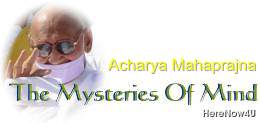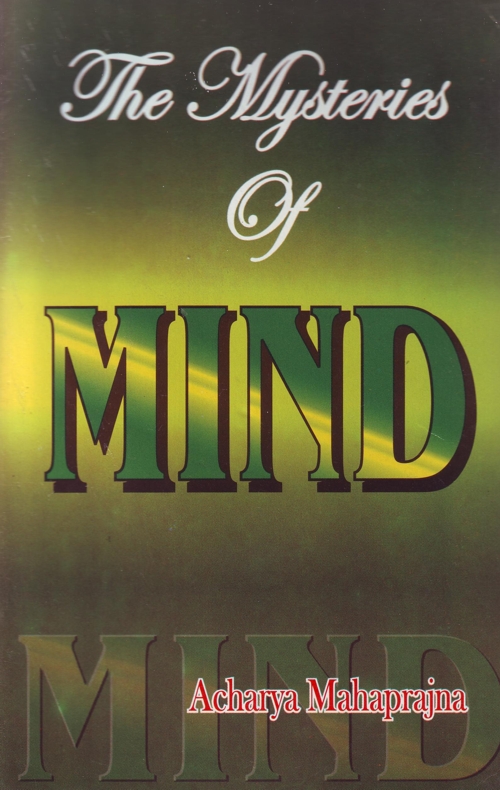
The practitioner has to adopt several means to bring the battle to a successful end. He has to be fully prepared from the very beginning of sadhana. The following are the means he has to adopt:
- To watch breathing.
- To watch the body.
- To watch the psychic centres.
- To give up eating.
- Fasting.
- Eating very little.
- Exercises in physical postures.
A fully equipped practitioner will never lose the battle. He will continue to advance even in the face of fierce opposition.
A scientist engaged himself in an experiment for thirty years. His thesis was that by chewing food instead of swallowing one becomes less sadist. It appears to be a strange thesis.
Tendencies, which have become deep-rooted in us, become active as soon as they get favourable occasions. If the circumstances in which they become active are changed, they can be easily controlled. Food not only nourishes the body, but also influences the sense organs and the mind. The process through which it is digested is an important process. There will be no intestinal trouble if the digestive process goes on smoothly. If it is disturbed, it not only harms the body, but also affects the mind adversely because it poisons theapana air in the stomach, which produces restlessness and harmful tendencies in the mind. Poisoning of the apana air also produces aggressive tendencies. A properly chewed food is easily digestible and keeps the mind free from the tendency to do harm to others. The scientist's thesis referred to above, therefore, seems to be quite rational.
Discipline in matters of food is a kind oftapa or austerity. Keeping the stomach light and abstaining from spicy food are also austerities. The practitioner who does not season himself with these austerities will fail.
To take precaution in matters of food by means of fasting, etc. as mentioned above is an integral part of sadhana. It does not mean giving up food entirely, nor is it desirable to be careless in this respect. We should neither eat too much nor too little, for both are injurious to physical and mental health. We should adopt the middle path. Neither should we weaken physical energy nor encourage laziness. A balanced diet is absolutely necessary, for after-all we have to use the body also as 'an instrument of sadhana, and, therefore, physical health has to be maintained carefully.
A practitioner who had been engaged in sadhana for a long time once came to meet me. He told me that he had a glimpse of his existence for the first time that day, that his vision had given him a great joy and that there was no greater meditation than the one which results in the perception of the self. I tried to remind him that the path of sadhana was not a straight but a circuitous path. It is not possible for a practitioner to achieve success in a short time. He will have to pass through several stages before he achieved his aim. If we asked a practitioner who happens to be passing through the initial stage of sadhana to see the spectator-knower or the flame of enlightenment or the rolling waves of consciousness within him, he would not be able to do so all of a sudden. He will see only bones, flesh and fat in the body and not the spectator-knower within him. He will complain that there is no flame and no ocean of consciousness there. We have, therefore, to encourage the practitioner and persuade him to proceed slowly and step by step. He should first watch the gross sensations and then the subtle ones. It is difficult to penetrate into the gross body, but once the practitioner has crossed the gross body, he will come across the subtle body. This subtle body is made of energy and is, therefore, called thetaijasa body (electrical body) or theabhavalaya (the aura) or a mass of electrical energy from which emanate waves of different colours. Next come the last and the subtlest body known as thekarma sarira. It is in this body that the effects or particles of our deeds gather, become mature and assume an active form to manifest themselves in the gross body and influence our behaviour. Our behaviour is the reflection of the karma body. The roots of our deeds lie in the karma body. It is on the basis of what happens in the subtle body that we can predict when the gross body is going to die or suffer from this or that disease. The diseases from which the gross body suffers first strike their roots in the subtle body. They sometimes take a long time to manifest their symptoms in the gross body. The causes of death also first appear in the subtle body.
The subtle body is always seething with all kinds of vibrations and waves. The practitioner will have to contact all that is happening there. For this he will have to make his mind very subtle and sensitive. If he succeeded in doing so, he will be able to go beneath the subtle body and get a clear and definite glimpse of the soul, which is a seer and knower only. He will see a spectrum of light in his heart and will come across an ocean of consciousness. This is called self-realization. But he will have to pass through a number of stages before he can arrive at this realization. In the beginning he will find everything hazy, but his vision will go on becoming clearer as he proceeds. Ultimately he will enter into a state where there is nothing to be perceived and experienced except his own soul. The duality of the seer and the seen and the knower and the known comes to an end here.
 Acharya Mahaprajna
Acharya Mahaprajna

